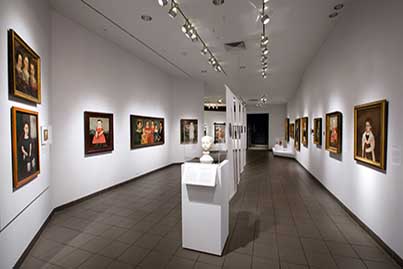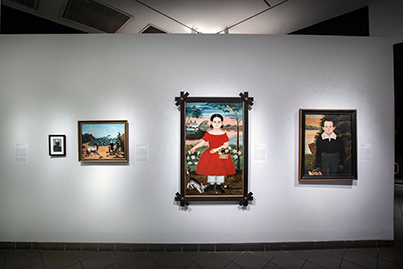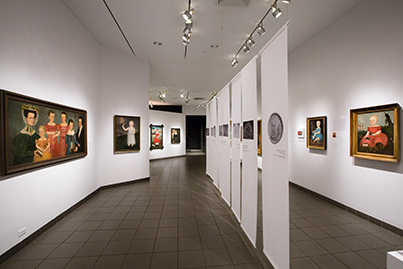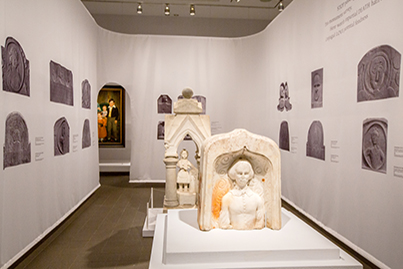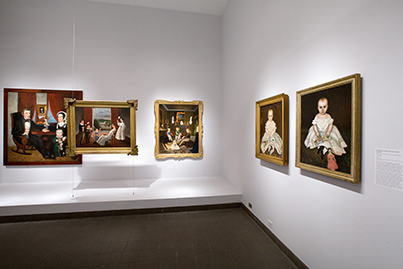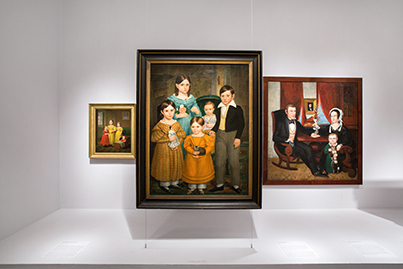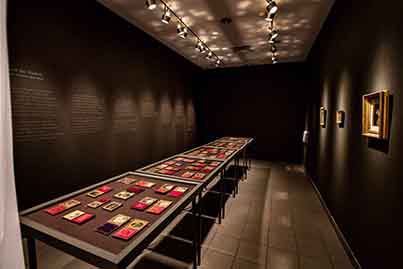Picking Flowers
Attributed to Samuel S. Miller (c. 1807–1853)
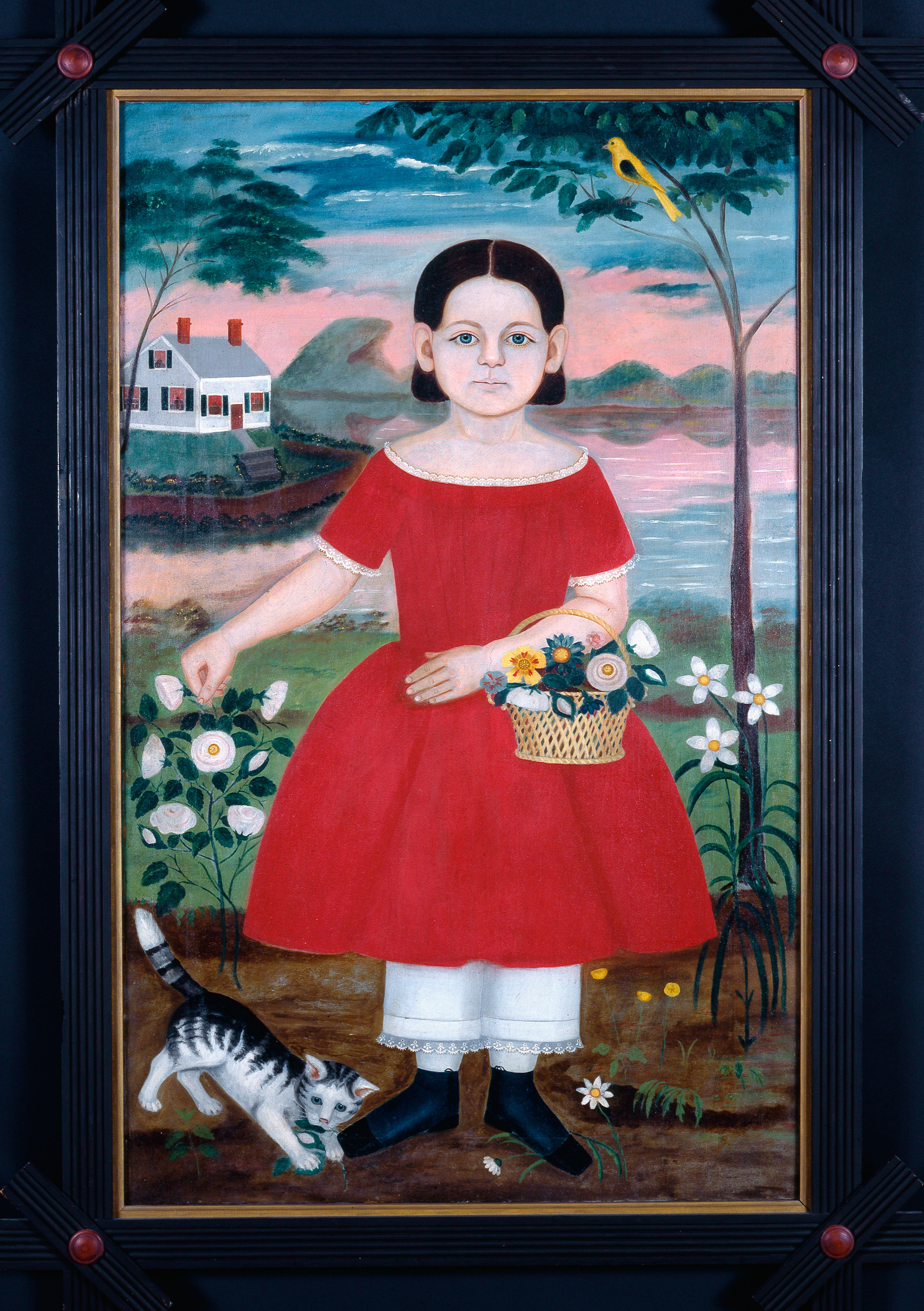
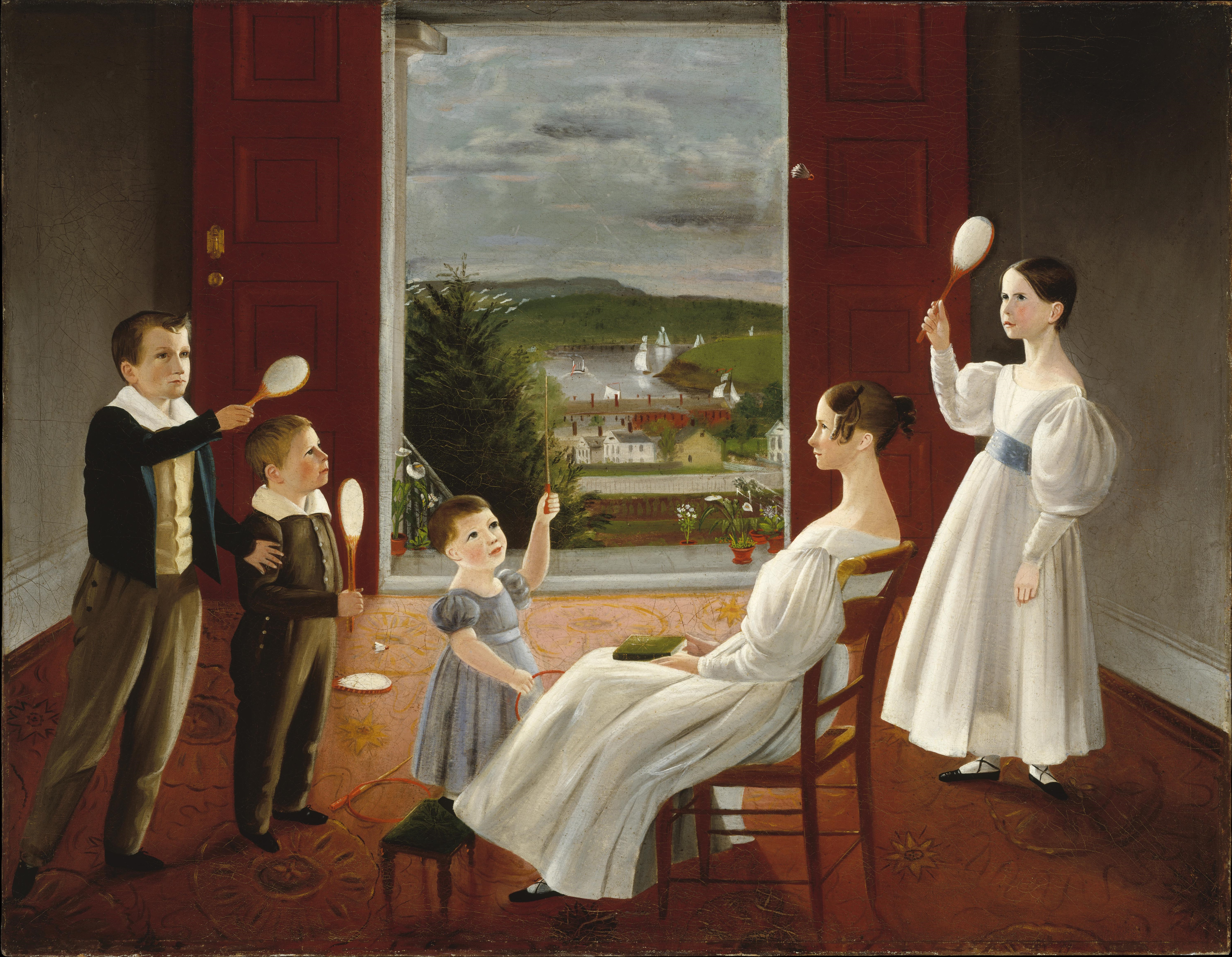
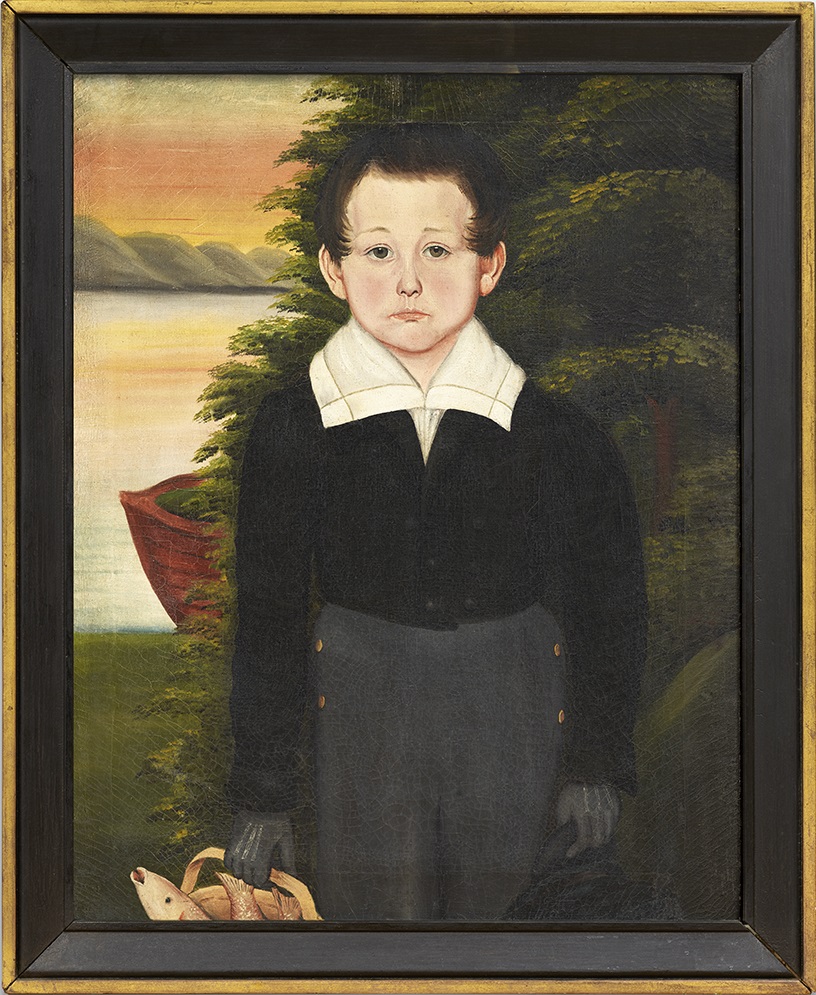
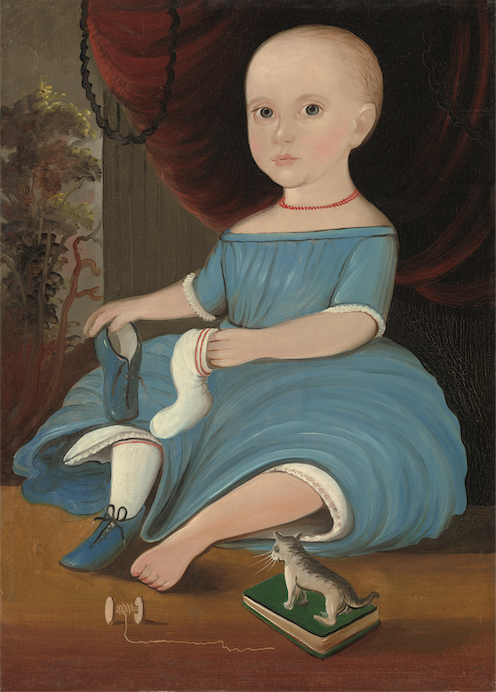
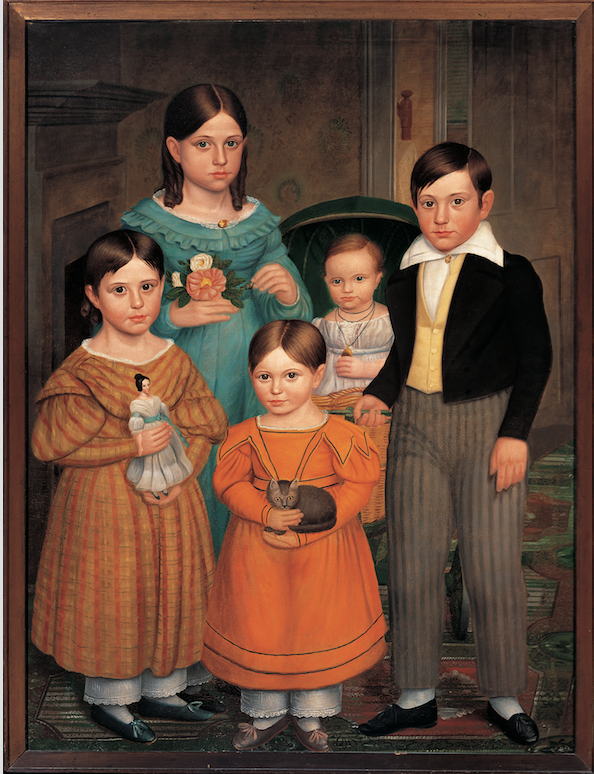
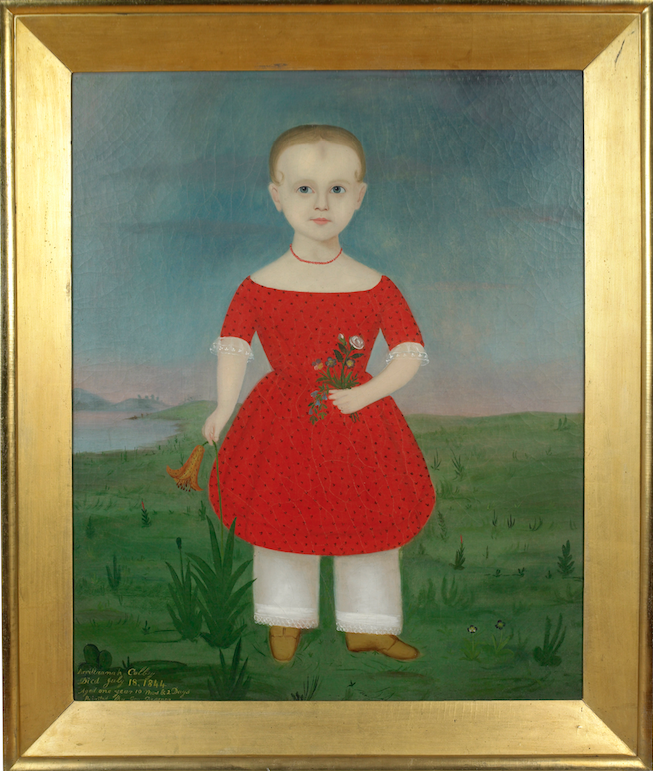
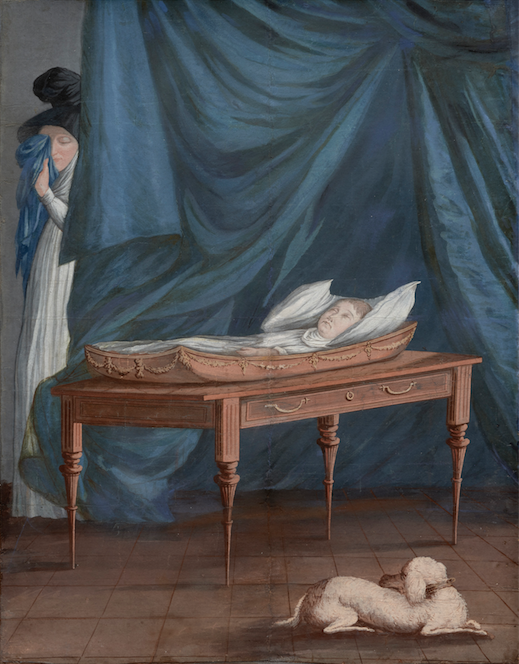
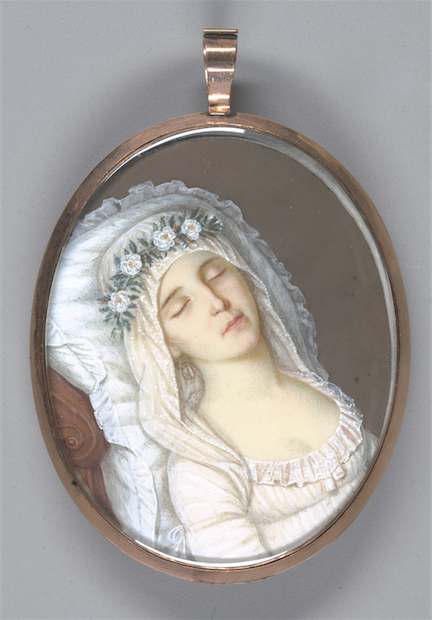
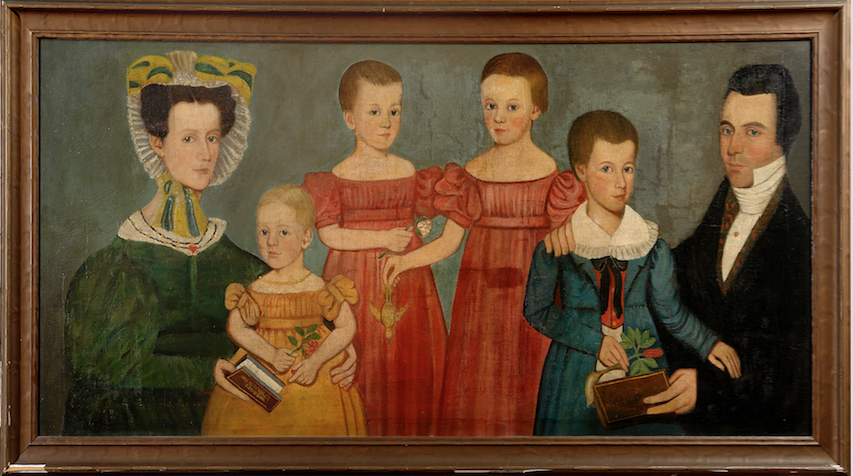
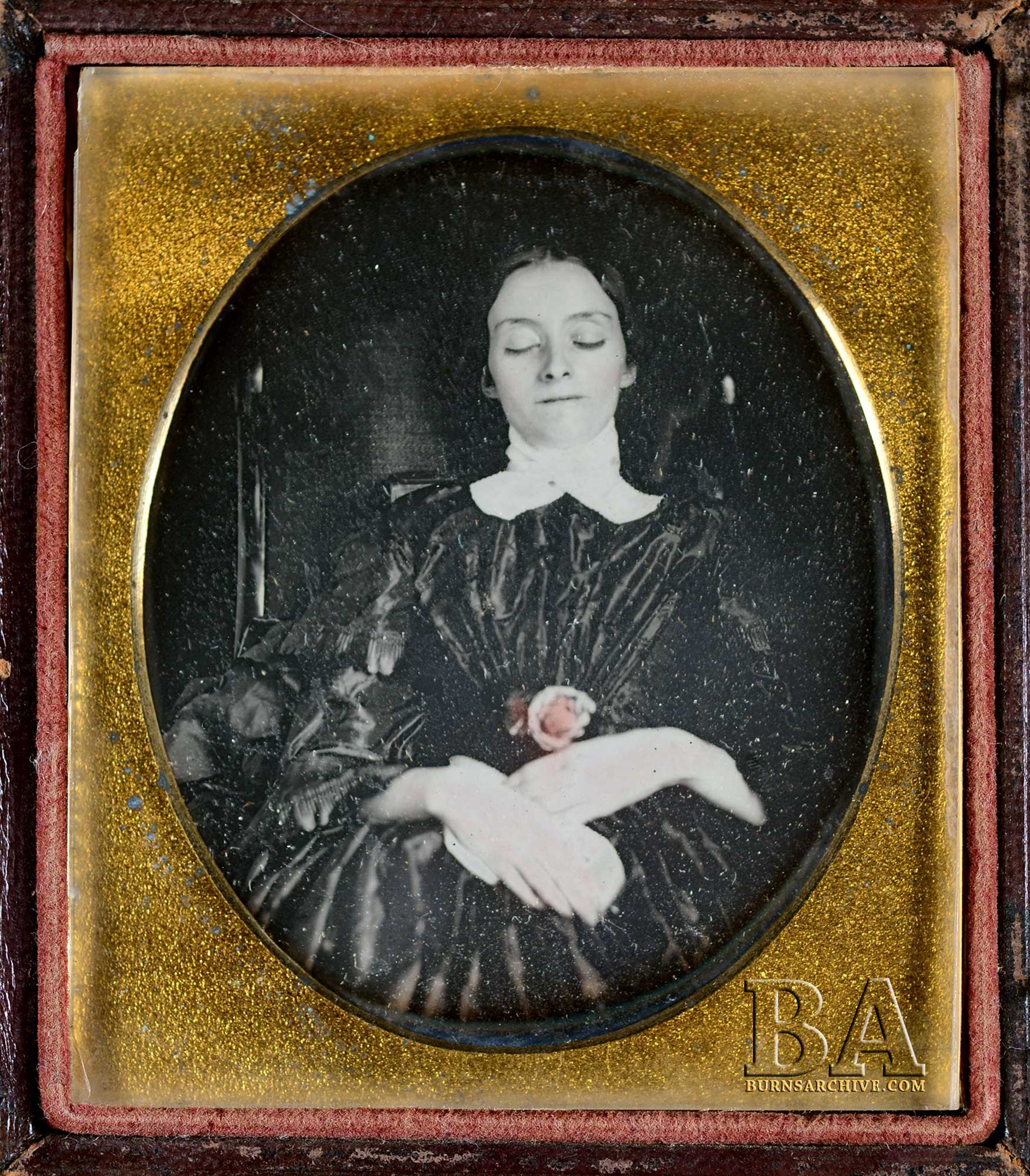
Securing the Shadow is a contemplation of American self-taught portraiture through the lens of memory and loss. Humanity demands that no life should pass without some recognition, whether it is in the form of a marked grave, a portrait painted after death, or a postmortem photograph. Such tokens were once proof of life—one last opportunity to secure a shadow that would survive beyond the limit of individual memories.
American gravestones offer standing testimony to the changing social structure of dying from the colonial period through the nineteenth century as portraits of the deceased slowly replaced stark memento mori of winged death heads, hourglasses, and the like. In painted portraiture, the transition from frank mortuary depictions to living images coincided with a cultural shift as the individual came to be privileged over the community and a redemptive view of death replaced a more intractable belief in original sin. Posthumous portraits and the postmortem daguerreotypes that ultimately replaced them are memories fixed in colored pigments on canvas and vapors on silver. We cannot help but hear them whisper through the years, “remember me,” because, as photographer Mathew Brady warned in 1856, “you cannot tell how soon it may be too late.”
Stacy C. Hollander, Exhibition Curator, Deputy Director for Curatorial Affairs and Chief Curator, American Folk Art Museum
The exhibition includes an installation of postmortem daguerreotypes from the Stanley B. Burns MD Family Collection and Archive.
Image credits: Picking Flowers, attributed to Samuel S. Miller (c. 1807–1853), probably New England, 1840–1850, oil on canvas, 44 1/2 x 27 1/2″; 57 x 54 x 2 1/4″ (framed), collection Fenimore Art Museum, Cooperstown, gift of Stephen C. Clark, N0255.1961. Photo by Richard Walker.
The Children of Nathan Starr, Ambrose Andrews (1801–1877), Middletown, Connecticut, 1835, oil on canvas, 28 3/8 x 36 1/2″; 39 3/16 x 47 1/4 x 4 13/16″ (framed), lent by the Metropolitan Museum of Art, New York, gift of Nina Howell Starr, in memory of Nathan Comfort Starr (1896–1981), 1987, 1987.404. Image copyright © The Metropolitan Museum of Art. Image source: Art Resource, NY.
Theodoric Myers, J. B. Gregory (dates unknown), probably New York State, 1840, oil on canvas, 30 x 24″; 34 1/2 x 28 1/2″ (framed), collection of Joan and Victor Johnson. Photo by Graydon Wood, Philadelphia.
Baby in Blue, William Matthew Prior (1806–1873), New England, c. 1845, oil on paper on wood, 23 3/4 x 17″; 29 3/8 x 22 5/8 x 1 1/4″ (framed), collection National Gallery of Art, Washington, gift of Edgar William and Bernice Chrysler Garbisch, 1953.5.58. Photo courtesy of National Gallery of Art, Washington.
The Farwell Children, Deacon Robert Peckham (1785–1877), Fitchburg, Massachusetts, c. 1841, oil on canvas, 53 1/2 x 40 1/2″; 62 1/2 x 48″ (framed), collection American Folk Art Museum, New York, gift of Ralph Esmerian, 2005.8.11. Photo © John Bigelow Taylor.
Arvillaanah Colby, George Gassner (1811–1861), Lowell, Massachusetts, c. 1850, oil on canvas, 36 x 29″; 42 1/2 x 35 1/2″ (framed), collection of Gina and Jim Bremner. Photo by Ellen McDermott.
Death of William, Michele Felice Cornè (1752–1845), Salem, Massachusetts, c. 1807, watercolor and gouache on paper, 19 1/2 x 15″, collection Peabody Essex Museum, Salem, Massachusetts, on deposit from Mrs. Nathaniel S. H. Sanders, 1944, 12894. Photo by Kathy Tarantola. © 2016 Peabody Essex Museum.
Harriet Mackie (The Dead Bride), P. R. Vallée (act. 1803–1815), Charleston, South Carolina, 1804, watercolor and graphite pencil on ivory, 2 7/16 x 1 15/16″, collection of Yale University Art Gallery, New Haven, Connecticut, Mabel Brady Garvan Collection, 1936.300. Photo courtesy Yale University Art Gallery.
Unidentified Family, artist unidentified, possibly Michigan, c. 1828–1835, oil on canvas, 29 x 66″; 36 x 73″ (framed), private collection. Photo by William Bengtson.
Young Woman with Rose, artist unidentified, United States, c. 1844, tinted sixth-plate daguerreotype, collection of Stanley B. Burns, MD. Photo courtesy Stanley B. Burns MD & The Burns Family Collection and Archive.
Installation photos by Olya Vysotskaya.
The exhibition is supported in part by the American Folk Art Society, Joyce Berger Cowin, the David Davies and Jack Weeden Fund for Exhibitions, the Ford Foundation, the Gladys Krieble Delmas Foundation, the Leir Charitable Foundations, public funds from the New York City Department of Cultural Affairs in partnership with the City Council, the New York State Council on the Arts with the support of Governor Andrew Cuomo and the New York State Legislature, and the Robert Mapplethorpe Foundation.
- The New Yorker
The exhibition is supported in part by the American Folk Art Society, Joyce Berger Cowin, the David Davies and Jack Weeden Fund for Exhibitions, the Ford Foundation, the Gladys Krieble Delmas Foundation, the Leir Charitable Foundations, public funds from the New York City Department of Cultural Affairs in partnership with the City Council, the New York State Council on the Arts with the support of Governor Andrew Cuomo and the New York State Legislature, and the Robert Mapplethorpe Foundation.
